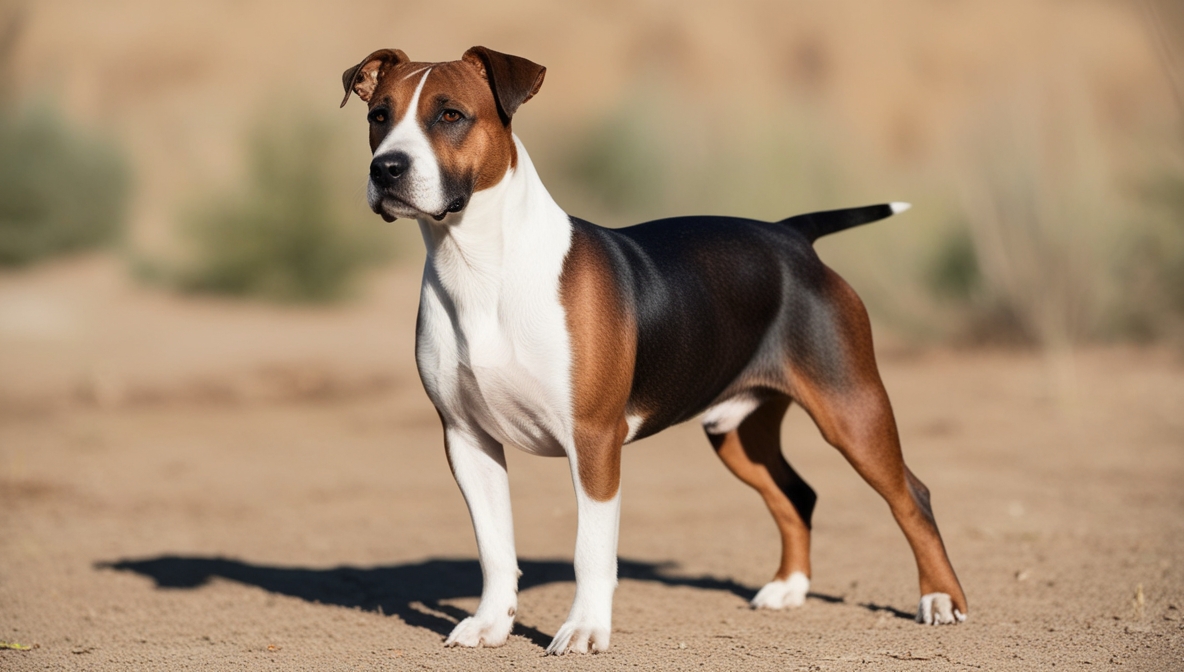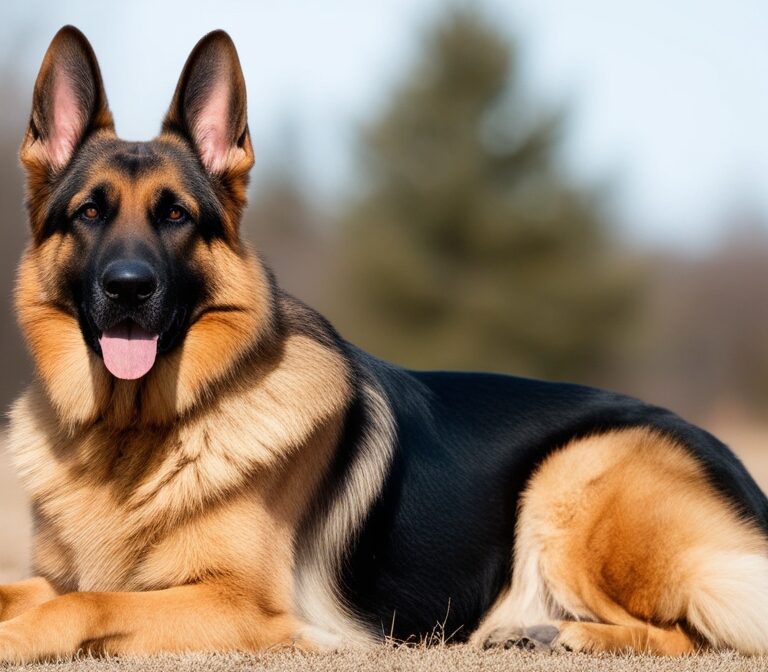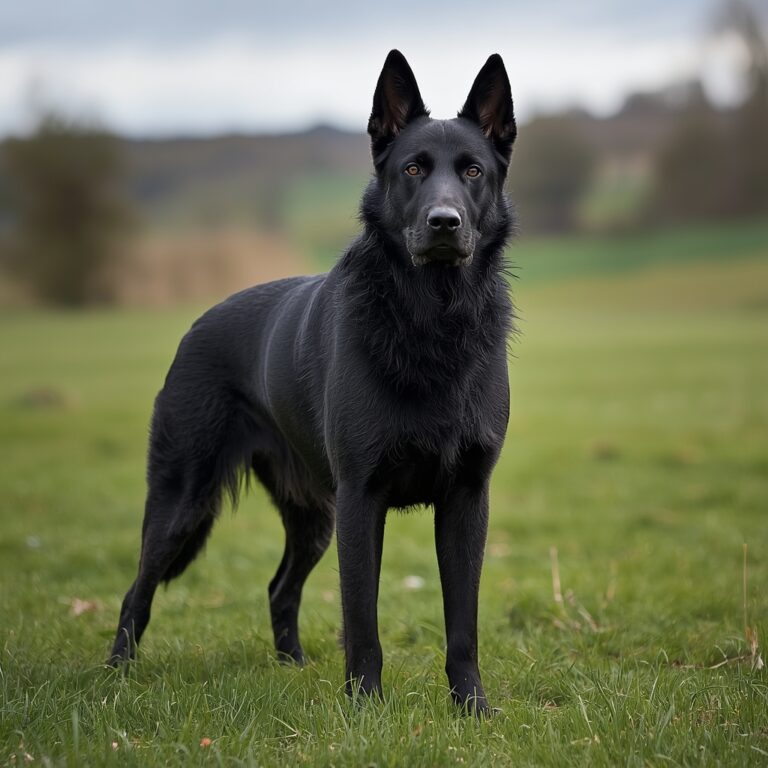American Staffordshire Terrier: Complete Breed Guide

Introduction to the American Staffordshire Terrier
The American Staffordshire Terrier, often called AmStaff, is a medium-sized, muscular, and highly intelligent dog breed admired for its loyalty, courage, and affectionate personality. Originating in the United States, this breed belongs to the terrier group and shares ancestry with the bulldog and pit bull-type dogs.
While many people mistakenly associate the AmStaff with aggression, the truth is that this breed is one of the most loyal, friendly, and people-oriented dogs when raised in a responsible environment. According to the American Kennel Club (AKC), AmStaffs are “confident, smart, and good-natured companions.” Their natural athleticism, strong build, and affectionate temperament make them highly versatile dogs, excelling both as family pets and as competitors in canine sports.
One of the most striking aspects of the American Staffordshire Terrier is its personality balance. While they are courageous and protective, they are also gentle with family members, especially children, making them excellent family companion dogs. They thrive on human interaction and dislike being left alone for long periods.
The breed’s popularity continues to grow worldwide due to its reputation as a devoted, loving, and protective companion. However, responsible ownership is key, as AmStaffs require consistent training, early socialization, and proper care. Without these, their strength and determination can become a challenge for inexperienced dog owners.
In this guide, we will explore everything about the American Staffordshire Terrier—from its history, physical traits, and temperament to training, health, and ownership responsibilities. By the end, you’ll have a complete understanding of whether this breed is the right fit for your lifestyle.
History and Origins of the Breed
The history of the American Staffordshire Terrier is deeply connected to the development of working and companion dogs in both England and the United States. The breed’s origins date back to the 19th century, when breeders in England began crossing bulldogs with various terrier breeds to create dogs that combined the strength of bulldogs with the agility and energy of terriers.
These early dogs, often called bull-and-terriers, were originally bred for bull-baiting and other blood sports. When these activities were outlawed, their role shifted toward companionship and farm work. Immigrants brought these dogs to America, where selective breeding focused on developing a larger, more muscular, and stable-tempered version of the breed.
By the early 20th century, the American variation had become distinct from its English counterparts, particularly the Staffordshire Bull Terrier. To differentiate, the American Kennel Club officially recognized the breed in 1936 under the name Staffordshire Terrier. Later, in 1972, the AKC updated the name to American Staffordshire Terrier to avoid confusion with the smaller English Staffordshire Bull Terrier.
The United Kennel Club (UKC), on the other hand, recognized a closely related breed called the American Pit Bull Terrier. While AmStaffs and Pit Bulls share common ancestry, modern breeding standards emphasize different traits, with the AKC focusing on stable temperament and conformation for shows.
Historically, the breed has been associated with strength, determination, and resilience, but it has also earned a reputation for being a loyal family protector. Many AmStaffs became beloved American family dogs, appearing in posters, advertisements, and even serving as mascots during wartime. Their dual history as both working dogs and companions reflects their adaptability and enduring popularity.
Today, the American Staffordshire Terrier stands as a symbol of strength, loyalty, and misunderstood beauty, admired by enthusiasts and breed clubs worldwide.
Breed Recognition by Kennel Clubs
The American Staffordshire Terrier is officially recognized by major kennel clubs around the world, though classification and standards may vary slightly.
The American Kennel Club (AKC) recognized the breed in 1936. In AKC standards, the AmStaff belongs to the Terrier Group, with emphasis on its muscular build, intelligence, and good-natured temperament. The AKC describes the breed as confident, smart, and loyal, encouraging responsible breeding that highlights stability and companionship.
The United Kennel Club (UKC), established in 1898, also recognizes the AmStaff but classifies it differently from the American Pit Bull Terrier. While both breeds share ancestry, the UKC separates them into distinct categories. The UKC emphasizes working ability and performance in its standards.
In the Fédération Cynologique Internationale (FCI), which governs breed standards internationally, the American Staffordshire Terrier is recognized under Group 3 (Terriers), Section 3 (Bull type Terriers). Countries across Europe, Asia, and Australia acknowledge this classification.
Beyond kennel clubs, the breed has a strong presence in various breed-specific clubs and organizations, including the Staffordshire Terrier Club of America (STCA). These organizations promote responsible ownership, health testing, and public education to combat the stigma often associated with pit bull-type dogs.
Recognition matters because it shapes how the breed is bred, judged, and perceived. Kennel clubs set strict standards for conformation, temperament, and breeding ethics, ensuring that the American Staffordshire Terrier remains a balanced and reliable companion dog.
Physical Characteristics
The American Staffordshire Terrier is a medium-sized, well-built, and muscular dog that embodies strength, agility, and elegance. Breed standards emphasize a balanced and proportionate body, with no exaggerated features. According to the American Kennel Club (AKC), males typically weigh between 55–70 pounds (25–32 kg), while females range from 40–55 pounds (18–25 kg). Their height averages 17–19 inches (43–48 cm) at the shoulder, placing them firmly within the medium-dog category.
One of the breed’s most recognizable features is its broad head and strong jawline. The muzzle is medium length, with a well-defined stop and powerful bite, though responsible breeding discourages overly exaggerated jaw structures. AmStaffs have dark, round eyes that express intelligence and confidence. Their ears can be cropped or left natural, with the natural version often semi-erect or rose-shaped.
The body of an American Staffordshire Terrier is muscular yet graceful, with a broad chest, strong shoulders, and a slightly arched neck. Their stance reflects power and alertness, giving the impression of a confident yet approachable dog. The back is relatively short and slopes gently into a well-defined tail, which tapers to a point and is carried low.
Their coat is short, stiff, and glossy, requiring minimal grooming. AmStaffs come in a wide variety of colors, including solid, parti-color, brindle, fawn, blue, black, and white. Breed standards accept nearly all color variations, though some kennel clubs discourage excessively flashy or merle coats due to health concerns.
Overall, the American Staffordshire Terrier’s physical characteristics represent a balance of strength, agility, and elegance, making them not only powerful but also strikingly beautiful dogs. Their well-proportioned build and confident demeanor are exactly why they are often admired both in the show ring and as family pets.
Temperament and Personality
The temperament of the American Staffordshire Terrier is one of the breed’s most misunderstood aspects. Despite misconceptions, the AmStaff is not inherently aggressive. In reality, when properly socialized and trained, they are friendly, affectionate, and deeply loyal companions.
AmStaffs are known for being devoted to their families, often forming strong bonds with children. Their natural patience and playful energy make them excellent playmates, though supervision is always recommended with very young kids due to their strength. They thrive on human interaction and dislike being left alone, often developing separation anxiety if neglected.
One of their most endearing traits is their loyalty. These dogs are naturally protective, which makes them reliable watchdogs. They alert their families to strangers but are not typically aggressive without provocation. Early training helps them distinguish between genuine threats and harmless interactions, reducing overprotective tendencies.
Their intelligence and curiosity make them quick learners, though their strong will requires consistent training. They respond best to positive reinforcement methods, as harsh discipline can damage trust and worsen behavioral problems.
While AmStaffs are usually friendly with people, they can be selective toward other dogs. Proper early socialization is crucial to help them coexist peacefully with other pets. With guidance, many American Staffordshire Terriers live happily in multi-dog households.
Perhaps the most defining personality trait of the AmStaff is their tenacity and determination. Originally bred for strength and endurance, they retain a persistent and courageous spirit. This makes them ideal for dog sports, agility training, and even therapy work when guided by experienced owners.
In summary, the American Staffordshire Terrier’s temperament combines affection, courage, loyalty, and playfulness, making them ideal family companions for responsible owners willing to invest in training and socialization.
Life Expectancy and Health Overview
The life expectancy of the American Staffordshire Terrier ranges from 12–16 years, depending on genetics, lifestyle, and healthcare. This relatively long lifespan for a medium-sized breed reflects the AmStaff’s overall resilience and robust constitution. However, like all breeds, they are predisposed to certain health conditions that prospective owners should be aware of.
Common Health Conditions
Hip Dysplasia – A hereditary condition where the hip joint develops abnormally, causing arthritis and mobility issues. Responsible breeders test for hip dysplasia to reduce its prevalence.
Heart Disease – AmStaffs may suffer from congenital heart issues, particularly aortic stenosis. Regular veterinary check-ups help catch these conditions early.
Skin Allergies – Their short coat makes them prone to skin irritations and allergies from environmental triggers such as pollen or food sensitivities.
Hypothyroidism – This endocrine disorder can cause weight gain, lethargy, and coat issues. It is treatable with medication once diagnosed.
Cerebellar Ataxia – A neurological condition sometimes seen in the breed. Ethical breeders screen for this disease.
Preventative Care
Regular veterinary visits, a balanced diet, exercise, and appropriate vaccinations are critical to ensuring the AmStaff’s long-term health. Dental care is often overlooked but essential, as this breed can be prone to gum disease without proper oral hygiene.
Lifestyle Factors
Active lifestyles contribute greatly to longevity. AmStaffs that receive sufficient exercise, mental stimulation, and socialization typically live healthier, longer lives. Owners must also ensure safe environments, as the breed’s curiosity and determination can sometimes lead to accidents if not supervised.
With responsible ownership, health monitoring, and proper veterinary care, the American Staffordshire Terrier can thrive for 14+ years, providing families with a loyal and affectionate companion throughout their life.
Training Requirements
The American Staffordshire Terrier is highly intelligent and eager to please, but training must begin early to channel their strong will and determination into positive behavior. This breed thrives on structure, consistency, and positive reinforcement training methods.
Early Socialization
The most critical stage of training begins during puppyhood. Early exposure to different people, pets, environments, and experiences helps prevent fearfulness or overprotective behavior later in life. Puppy obedience classes are highly recommended.
Obedience Training
AmStaffs learn basic commands quickly, but their independent streak means owners must be confident and consistent leaders. Positive reinforcement—using treats, toys, and praise—produces the best results. Harsh corrections or punishment can damage trust and trigger defensive behavior.
Mental Stimulation
Due to their intelligence and curiosity, AmStaffs require mental enrichment in addition to physical exercise. Puzzle toys, obedience games, and agility training keep them engaged. Without stimulation, they may become bored and develop destructive habits.
Leash Training
Because of their muscular build and prey drive, leash training is essential. AmStaffs can pull strongly if not trained properly, making early leash manners critical for enjoyable walks.
Social Manners
Teaching impulse control is vital for this breed. Commands like “leave it,” “stay,” and “come” help prevent unwanted chasing or confrontations with other animals.
Advanced Training
Many AmStaffs excel in dog sports such as agility, obedience trials, and weight pulling. Their determination and drive make them strong competitors, and training for sports provides both physical and mental outlets.
Ultimately, the American Staffordshire Terrier’s training requirements demand patience, commitment, and consistency. With proper guidance, they transform into obedient, affectionate, and well-mannered companions that embody the breed’s best traits.
Conclusion:
The American Staffordshire Terrier is a breed that combines strength, loyalty, and affection in one remarkable package. Too often misunderstood due to its shared ancestry with pit bull-type dogs, the AmStaff stands out as a loving, intelligent, and versatile companion when placed in the right hands.
From its history as a hardworking farm dog to its recognition by major kennel clubs like the American Kennel Club (AKC) and United Kennel Club (UKC), the breed has evolved into a well-rounded family dog admired worldwide. Physically, they are muscular and athletic, with striking appearances that reflect both power and elegance. Their temperament, however, is what truly wins hearts—they are loyal protectors, affectionate family members, and playful companions for children and adults alike.
Owning an American Staffordshire Terrier does come with responsibilities. They require consistent training, early socialization, regular exercise, and mental stimulation. Neglecting these needs can lead to behavioral challenges, not because the breed is aggressive by nature, but because their intelligence and determination must be guided constructively. With proper care, AmStaffs thrive in both urban and rural environments, adapting to different lifestyles as long as they remain close to their families.
Health-wise, their lifespan of 12–16 years makes them a long-term commitment. Responsible breeders perform genetic health testing to minimize risks of conditions such as hip dysplasia, heart disease, and skin allergies. Owners who commit to veterinary care, nutrition, and exercise can expect a healthy and vibrant dog for many years.
Most importantly, choosing an American Staffordshire Terrier means embracing a breed that has been unfairly stigmatized but continues to prove itself as one of the most devoted and loving dog breeds. When raised responsibly, they are gentle with children, loyal to families, protective when necessary, and endlessly affectionate.
In the end, the American Staffordshire Terrier is more than just a breed—it is a faithful companion, a resilient athlete, and a reminder that with love and guidance, even the strongest dogs can be the softest at heart. For families and individuals willing to invest in training, care, and responsible ownership, the AmStaff will reward you with unwavering loyalty, endless affection, and a lifetime of companionship.





